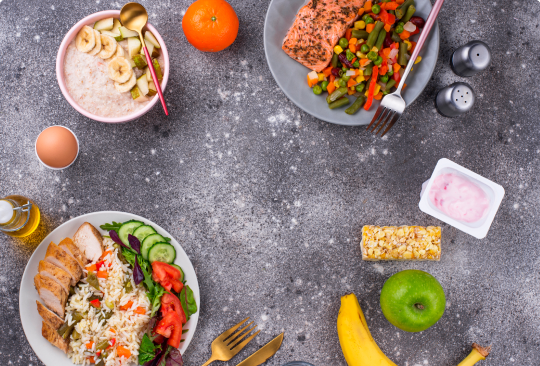Hello Health Advocates
Last week, I posted the news of a study published by scientists at the Queensland Brain Institute which found pregnant women with low vitamin D were more likely to have children with autistic traits by the age of six. The lead scientist on the study suggested vitamin D supplementation in pregnancy might be a simple remedy to the problem.
So what about thinking WHY or HOW might low vitamin D levels be explained in young child bearing women in our sun drenched country?
Well let’s look at the facts! It’s all to do with the PLASTICS in our life. The World Health Organisation states that Enodocine Disrupting Chemicals EDCs: have been suspected to be associated with altered reproductive function in males and females; increased incidence of breast cancer, abnormal growth patterns and neurodevelopmental delays in children, as well as changes in immune function.
Human exposure to EDCs occurs via ingestion of food, dust and water, via inhalation of gases and particles in the air, and through the skin. EDCs can also be transferred from the pregnant woman to the developing foetus or child through the placenta and breast milk. Pregnant mothers and children are the most vulnerable populations to be affected by developmental exposures, and the effect of exposures to EDCs may not become evident until later in life. Research also shows that it may increase the susceptibility to non-communicable diseases.
Recent US study in adults reported markers of phthalate (DEHP) being consistently inversely associated with vitamin D levels. Phthalates are a group of chemicals commonly used to make plastics more flexible and harder to break.
With bisphenol, a statistically significant inverse relationship with vitamin D was found in women, but not in men. Why women? Because pre-menopause we have a larger hormone pool to attack. Bisphenols are used to make plastics commonly used in products like water bottles, the lining of tin cans and “squeezy” baby food packaging, sports equipment, CDs, and DVDs.
Exposure to these chemicals is now almost universal. Data from French pregnant women show that bisphenol A (BPA), and some metabolites of phthalates, pesticides (mainly pyrethroids), dioxins, furans, polychlorobiphenyls (PCBs), brominated flame retardants (BFRs), perfluorinated compounds (PFCs) and metals were quantified in almost 100% of the pregnant women. Can you believe this, frightening to say the least.
SO is the answer to supplement Vitamin D in pregnancy ABSOLUTELY. Is the answer to reduce overall plastic exposure from our daily coffee ABSOLUTELY especially if you are pregnant or thinking of falling pregnant. Plastics are the perfect endocrine disruptors lets get more environmentally friendly and reduce our plastic addiction.
Vitamin D supplement Guidelines: Best as an oral spray or injection
Pregnant women 5000IU a day
Adult women 3000IU a day
Men 2000IU a day
Doctors can prescribe a high dose once a week 35000IU capsule.
Australia Stats:
I would like to thank Authors Simon Chapman & Matthew Landos for a very up to date appraisal
- Simon Chapman Simon Chapman is a Friend of The Conversation.
Emeritus Professor in Public Health, University of Sydney - Matthew Landos Lecturer Veterinary Aquatic Animal Health, University of Sydney
In 2013, the Coalition government repealed Labor’s changes to the APVMA – Australian Pesticides and Veterinary Medicines Authority (the Commonwealth agricultural veterinary chemical regulator), which would have required chemicals to be re-registered every 15 years. In many cases, this would have required reassessment of existing chemicals using contemporary testing methodologies.
Under intense lobbying from chemical companies and big agricultural interests, Labor back-flipped and supported the Liberal changes to their own reforms. So some of the organophosphates pesticides registered in the 1960s and 1970s have never been reassessed to see if, given advances in knowledge,
Australian regulators have largely managed to avoid calling endocrine disruption a toxicological endpoint requiring assessment. So the vast majority of agricultural and veterinary chemicals used today on food in Australia are unassessed for specific EDC activity. The chemicals which migrate from packaging materials used on food, into food also lack this rigorous assessment.
Australia continues to sanction the use of recognised highly hazardous pesticides (HHP), banned in many nations of the world on food crops and in locations where human exposures are unavoidable. The regulators’ claim is that agriculture cannot do without them and the reduced crop yields would be economically catastrophic. For example, the cost of eliminating such pesticides in the UK alone has been estimated at between £160-440 million.
They imply the overall benefit to society of using these pesticides exceeds the risks, implying nations like France, Netherlands and Mozambique which have banned various HHPs from use, were too conservative in their assessments. To truly undertake such an assessment, one would need to assess all the impacts including contributions to endocrine disruption driven disease states. No such assessment is being done in Australia.
The denial of harm and lack of adequate assessment continues in the industrial chemical arena, where assessment is even less rigorous. One topical example is the flame retardants PFOS/PFOA which have been used in military and other airports.
The Australian government relied upon outdated ESFA 2008 data, rather than contemporary USA assessment data to set a tolerable daily intake 75 times higher than the USA.
PFOA/PFOS virtually never breakdown, and accumulate in tissues, and are endocrine disruptors linked to cancer, liver and thyroid disease, immune suppression and decreased fertility.
Within human pharmacy, many chemicals that have endocrine actions lie outside the Department of Health’s Therapeutic Goods Authority’s remit, but are part and parcel of delivery mechanisms or packaging of the medicines, (such as preservatives in creams (parabens) and perfumes/plasticisers (phthalates), even blood collection bags leach phthalates into the blood.
SO is the answer to supplement Vitamin D in pregnancy? ABSOLUTELY. Is the answer to reduce overall plastic exposure from our daily coffee? ABSOLUTELY !
Mary-Louise Condon
BPharm PCCA ABAAHP


